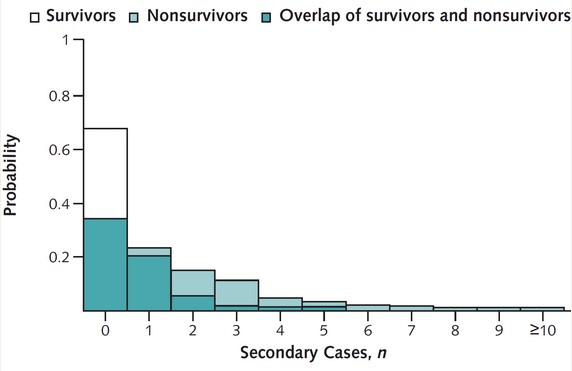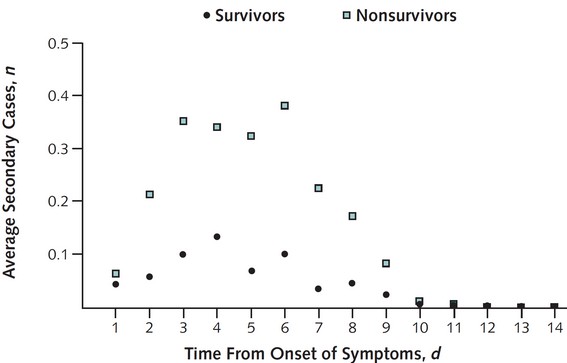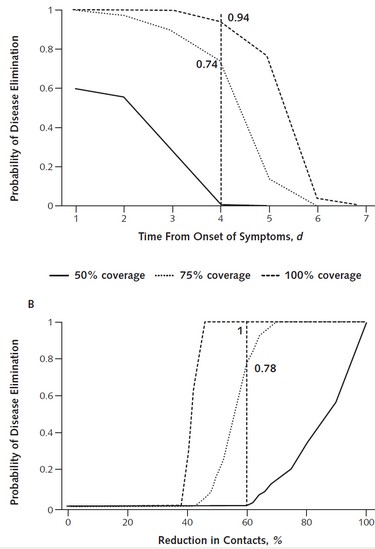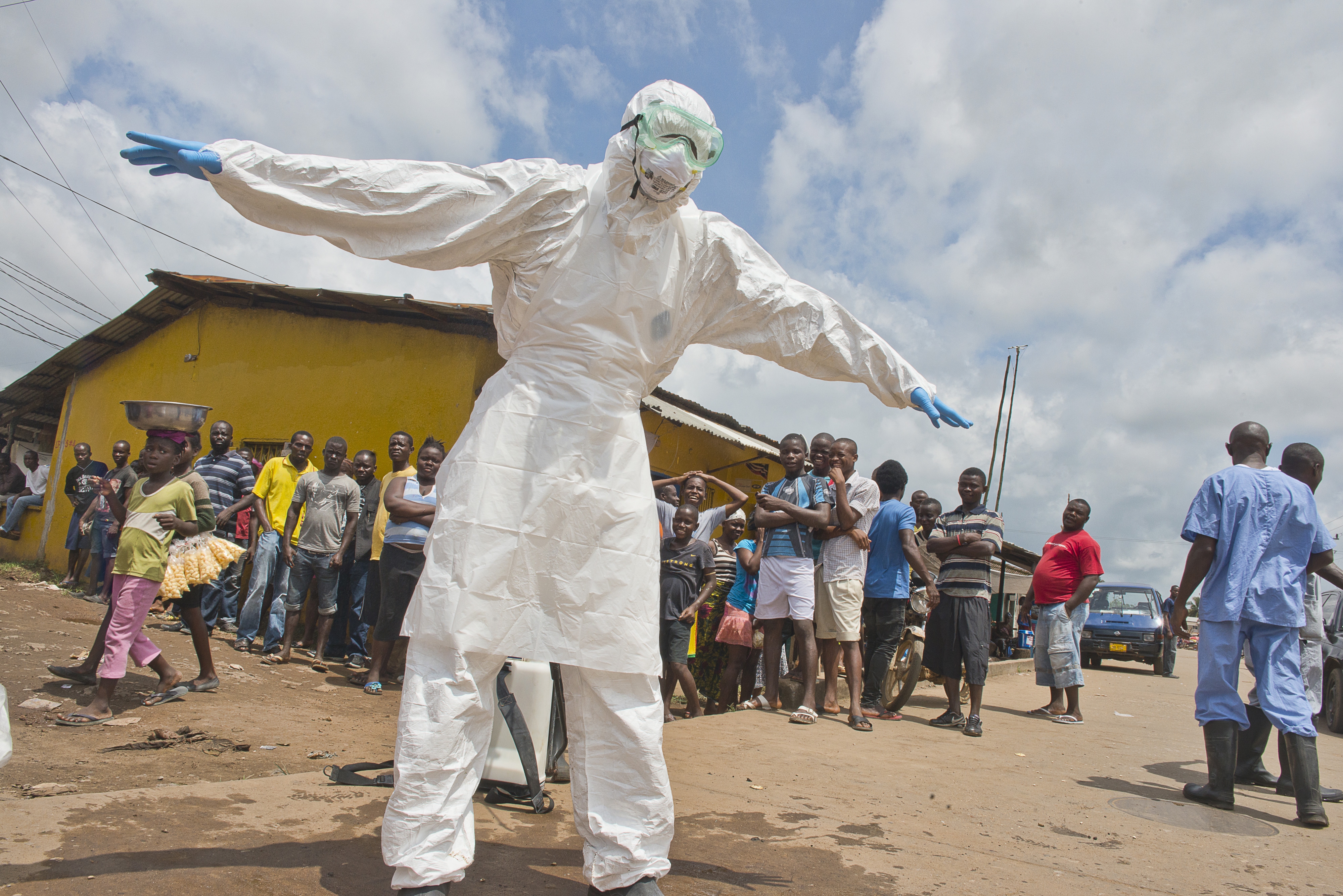A recent study by Yale University has found that isolating Ebola victims within four days of symptom onset could achieve disease elimination in Liberia. Setting out to determine how to best use scare resources to combat the Ebola outbreak overwhelming West Africa, and after analyzing the incidence and case fatality of the outbreak, the team concluded that the best hope for ending the spread of Ebola was isolation of Ebola victims very early in the progression of symptoms–although the time window suggested by the research was smaller than current time to hospital reporting in West Africa.
“The Ebola outbreak in Western Africa is spiraling out of control. The need to determine how to deploy scarce resources to end this crisis is urgent,” Dr Dan Yamin, Postdoctoral Associate in Epidemiology at Yale School of Medicine and lead author of the report, framed the study.

The goal of the study was to “evaluate the contribution of disease progression and case fatality to transmission and to examine the potential for targeted interventions to eliminate the disease,” according to the report.
The team used both clinical and epidemiological data–incidence and case fatality records–from the Liberian Ministry of Health and Social Welfare, and found that secondary infections occurred during the infectious period of an Ebola victim at an average rate of 1.73. That is, each infected person passed on Ebola to 1.73 healthy individuals.

Ebola victims who did not survive passed the disease on to 0.66 people, while nonsurvivors passed the disease on to 2.36 people. Survivors of Ebola, the study found, infected at least one healthy person in 32 percent of cases. Nonsurvivors infected at least one healthy person with a 67 percent probability rate.
“Consequently, nonsurvivors, who made up 63% (CI, 60% to 64%) of the population, were responsible for 86% (CI, 63% to 98%) of transmissions,” the researchers found.
Left alone, “the number of newly reported cases will be doubled every 20 days,” Yamin told The Speaker, pointing out that the number of newly reported cases should not be misconstrued to be the total number of cases.
The conclusion reached by the team was that isolation of infected individuals offered a chance of eliminating the disease. Isolation of 75 percent of nonsurviving infected individuals within four days after symptoms began created a 74 percent chance of disease elimination. Isolation of all infected people offered a marginal reduction beyond the 74 percent. Isolation of asymptomatic people, however, made no practical sense, the researchers found.
“There is no medical sense in quarantining asymptomatic people,” Yamin told us. “All evidence shows that asymptomatic people (and people that were exposed and are in the “incubation period”) can’t transmit.
“Isolating all individuals before symptoms onset is not practical,” said Yamin, noting that, of course, it “would obviously lead to disease elimination.”

The most pragmatic way to actually combat Ebola in West Africa, Yamin told us, was isolation of only those people who were already symptomatic.
“In the absence of sufficient isolation units, our model emphasizes that targeted isolation of those who are mostly responsible for transmission may be the most efficient way to contain Ebola. Specifically, because infectiousness increases greatly with disease progression we found that that isolating 75% of infected individuals (particularly, the more severe cases) within four days of symptom onset has a high chance of eliminating the spread of the disease.
The researchers found that the current average period from symptom onset to hospitalization in Liberia was approximately 5 days–significantly beyond the requirements suggested by the study.
The researchers also evaluated the effectiveness of self-quarantine–a pragmatic strategy in areas where there were not sufficient isolation units. Self-quarantine of 75 percent of all infected could eradicate Ebola with 78 percent probability.
“Effectively, we tested self-quarantine by contact reduction of an infected person beyond what was currently reported,” Yamin told us. “The data provided by the Liberian Ministry of Health suggests that, an infected individual contacts, on average, with 6 people–this

number seems to be substantially lower than the number of contacts of a healthy person.
“Our results suggest that to achieve 78% for elimination, additional 60% reduction in contacts should occur following the first day from symptoms onset. Practically, implementing even this strategy seem to be challenging, which highlights the importance of increasing isolation units in Liberia.”
The conclusion of the researchers was that the massive international support directed at helping in West Africa “should be directed towards expanding the capacity of hospitalized case isolation.”
“Targeted isolation may offer the best hope of ending the Ebola epidemic.”
The report, “Effect of Ebola Progression on Transmission and Control in Liberia,” was authored by Dan Yamin, PhD; Shai Gertler; Martial L. Ndeffo-Mbah, PhD; Laura A. Skrip, MPH; Mosoka Fallah, PhD; Tolbert G. Nyenswah, MPH; Frederick L. Altice, MD, MA; and Alison P. Galvani, PhD, was published in Annals of Internal Medicine, and was funded primarily by the National Institute of Health.
–
By Andrew Stern
Photo: International Federation of Red Cross and Red Crescent Societies
